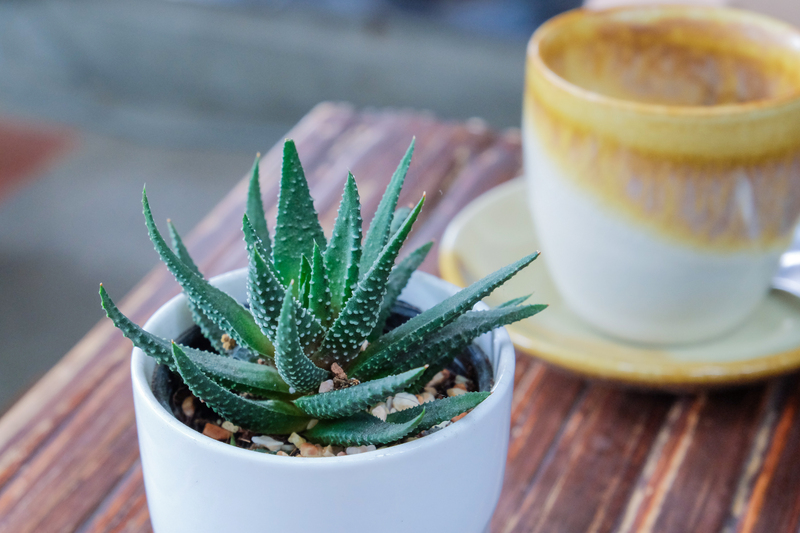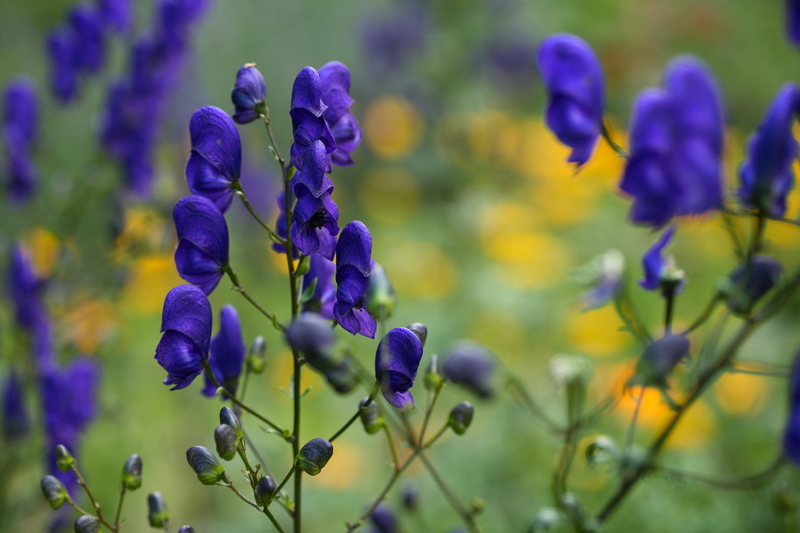Everything You Need to Know for a Successful Moveable Garden
Are you dreaming of a lush, thriving garden but lack a permanent outdoor space? Meet moveable gardening--the flexible, space-saving solution loved by urban dwellers, renters, and anyone seeking adaptability. In this comprehensive guide, we'll explain everything you need to know for a successful moveable garden, from choosing containers to maximizing harvests and creating beautiful, portable green spaces.
What Is a Moveable Garden?
A moveable garden is an innovative gardening system that allows you to grow a variety of plants in containers or portable raised beds. These gardens can be easily repositioned to capture sunlight, avoid harsh weather, or accompany you if you move homes. Moveable gardens are especially ideal for those with limited yard space, decks, balconies, patios, or anyone seeking a low-commitment entry into gardening.
The Benefits of a Moveable Garden
- Adaptability: Easily change your garden's location for optimal sunlight, shade, or protection from storms.
- Flexibility: Try out different arrangements, plant combinations, or easily expand your garden over time.
- Accessibility: Great for people with mobility constraints. Containers can be raised to a comfortable working height.
- Mobility: Take your garden with you if you move houses--no need to leave behind precious plants.
- Space Efficiency: Turn small, unused nooks into flourishing green oases.

Choosing the Right Containers for Your Portable Garden
Container Types and Materials
Moveable gardens thrive when built with the right kinds of containers. Consider options such as:
- Plastic Pots: Lightweight, affordable, and available in many sizes. They retain moisture well and are easy to move.
- Self-Watering Containers: Perfect for gardeners with hectic schedules, these have hidden water reservoirs that reduce watering frequency.
- Grow Bags: Made of durable fabric, they provide good drainage and can be folded and stored when not in use.
- Wooden Boxes or Crates: Offer a rustic look and excellent insulation but should be lined with plastic to avoid rot.
- Ceramic or Terra Cotta Pots: Stunning visuals but heavier to move; best for semi-permanent arrangements.
- Repurposed Items: Get creative with old buckets, barrels, or even vintage drawers for a unique, eco-friendly touch.
Size and Drainage Considerations
The size of your container significantly impacts plant growth. For a successful moveable garden:
- Sufficient Volume: Larger containers retain moisture better and support bigger root systems. Ideally, containers should be a minimum of 12 inches deep and wide for veggies and flowers.
- Drainage Holes: Always ensure containers have drainage to prevent root rot. If not, drill holes yourself.
Soil and Fertilizer: The Foundation of a Thriving Portable Garden
Selecting the Right Potting Mix
Ordinary garden soil is too heavy and compact for container gardening. Instead, use high-quality potting mixes that are lightweight, well-draining, and rich in organic matter. Look for ingredients like perlite, coco coir, compost, and peat moss that retain moisture yet prevent waterlogging.
Fertilizer Needs
As plants in moveable gardens quickly absorb nutrients, they require regular feeding for robust growth. Choose slow-release granular fertilizers or liquid feeds designed for container plants. Supplement with organic amendments like worm castings or compost tea to sustain healthy growth.
Positioning and Light Requirements for Your Moveable Garden
Understanding Plant Light Needs
Plants differ in their sunlight needs. Some thrive in full sun (at least six hours direct sunlight), while others prefer partial shade. With your moveable garden, you can relocate containers throughout the season to ensure optimal light.
- Full-Sun Lovers: Tomatoes, peppers, basil, zinnias
- Part-Shade Plants: Lettuce, spinach, impatiens, ferns
- Shade-Tolerant Options: Mint, hostas, begonias
Tip: Observe your outdoor area throughout the day to see where sunlight falls, and move your garden accordingly.
Wind and Weather Protection
Moving gardens are mobile but also more exposed to wind and extreme temperatures. Shield delicate plants with barriers or group containers for mutual protection. On hot days, shift containers into partial shade; bring sensitive containers indoors during frosts.
Watering Techniques and Moisture Control
How Often Should You Water a Moveable Garden?
Container plants often need more frequent watering than those in the ground since pots dry out quickly, especially in summer. Stick your finger into the soil up to 2 inches; if it feels dry, it's time to water.
- Self-Watering Systems: These containers store moisture at the base, ensuring roots are never parched.
- Mulching: Add a layer of organic mulch (like straw or bark chips) on top of your soil to slow evaporation and keep roots cool.
Best Plants for a Successful Moveable Garden
Top Vegetables for Portable Gardens
- Lettuce and Salad Greens: Easy to grow, quick to harvest, and suitable for small spaces.
- Herbs: Basil, parsley, cilantro, and mint all perform beautifully in pots.
- Tomatoes: Choose dwarf or bush varieties like 'Patio Princess'.
- Peppers: Compact and productive, peppers adapt well to containers.
- Radishes and Carrots: Select round-root types for shallow containers.
Ornamental Plants and Flowers
- Pansies and Petunias: Bright, bold, and resilient annuals.
- Succulents: Minimal care, great architectural variety.
- Ferns and Hostas: Thrive in partial shade, perfect for sheltered corners.
- Trailing Plants: Sweet potato vine, ivy, or nasturtium for cascading effects.
Seasonal Care Tips for Your Mobile Garden
Spring and Summer Care
Spring is planting season for most annuals and veggies. Increase watering as temperatures rise and fertilize every 2-4 weeks. Keep an eye out for pests like aphids; because containers are small, infestations can become severe quickly. Use organic sprays or introduce beneficial insects.
Fall and Winter Strategies
- Bring Indoors: Move frost-sensitive plants inside before temperatures drop.
- Insulate: Wrap containers with burlap or bubble wrap to protect roots from freezing.
- Reduce Watering: Many houseplants and dormant perennials need minimal moisture in winter.
Creative Ideas and Design Tips for Moveable Gardens
Vertical and Tiered Arrangements
Amplify your growing space with vertical gardens, stacked planters, or shelving units. Hanging baskets and wall-mounted pots are excellent for balconies or fences. Mixing heights and textures creates visual interest and helps maximize sunlight capture.
Themed Portable Gardens
- Herb Kitchen Garden: Grow culinary favorites like basil, rosemary, and chives in a moveable planter near your kitchen door.
- Pollinator Oasis: Attract bees and butterflies with pots of lavender, marigold, and cosmos.
- Children's Garden: Colorful, easy-to-pick cherry tomatoes and snap peas inspire curiosity and fun.
- Mediterranean Patio: Pair olives, thyme, and succulents in rustic containers.
Common Challenges in Moveable Gardening (and How to Overcome Them)
Root Crowding and Compaction
Plants can outgrow their pots or exhaust soil nutrients. Regularly check roots and repot as needed, refreshing soil each season to keep your portable garden healthy.
Pest and Disease Management
Check plants regularly for signs of trouble. Remove dead leaves, isolate sick plants, and use organic controls. Healthy soil and rotation prevent most issues.
Mobility and Weight Concerns
Large, heavy containers can be tough to move. Use plant caddies, casters, or lightweight grow bags to ease movement. Water plants after relocating to minimize spills and breakage.
Must-Have Accessories for Portable Gardeners
- Plant Trolleys or Caddies: Put heavy pots on wheels for easy movement.
- Add-on Trellises: Support climbing vegetables or decorative vines.
- Drip Irrigation Kits: Optimize watering in multi-container arrangements.
- Grow Lights: For year-round indoor gardening or extra winter brightness.
- Labels and Markers: Keep track of plant varieties and care schedules.

Eco-Friendly Tips for Sustainable Moveable Gardening
- Reuse and Repurpose: Choose containers made from recycled materials, or give a second life to old items.
- Organic Practices: Avoid synthetic fertilizers and pesticides in your portable garden.
- Compost: Enrich container soil with home-made or store-bought compost, closing the nutrient loop.
- Water Wisely: Mulch, self-watering systems, and drip irrigation all reduce water use.
Final Thoughts: Cultivating Success with Your Moveable Garden
A moveable garden is proof that gardening can flourish anywhere. By choosing the right containers, soil, location, and plants, you'll enjoy all the beauty and bounty of gardening with unmatched flexibility. Whether you're hoping to brighten a balcony, fill a tiny patio with flavor, or create a plant-packed retreat that follows you from home to home, know that moveable gardening offers endless possibilities--limited only by your imagination.
Ready to get started? Grab a pot, sow some seeds, and watch your portable green sanctuary thrive!